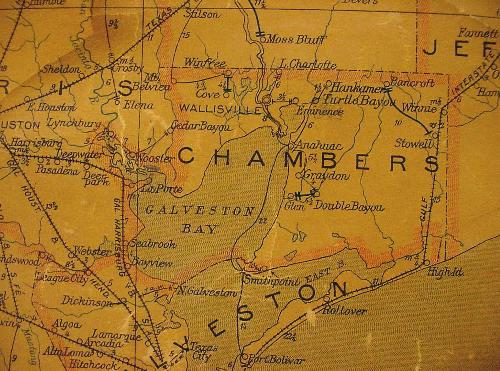|
|
As
smoke cleared from the battle
at San Jacinto 179 years ago, it was the best and worst of times
for the new Republic
of Texas.
Amid unruliness and confusion, the jubilant Texans had to learn how
to handle their newly won independence, how to organize a structured
society and replace disorder with order.
Tying up the loose and frayed ends of the infant government was complicated,
and the man with the hardest job of all was a lawyer from Lynchburg.
David G. Burnet never asked for the job of president of the Republic
of Texas.
When delegates gathered for the independence convention in early March
1836 at Washington-on-the-Brazos,
Burnet showed up as a lawyer on a business trip. He figured he could
make important contacts at the convention and persuade men with political
clout to help him win pardons for two clients in a murder case at
Smith Point.
Delegates, however, had other business at hand, such as declaring
independence from Mexico and picking the top leaders for the new government.
As names of nominees rolled out, Burnet felt the shoulder tap.
"What just happened?" he likely asked himself after delegates elected
him president.
When the accused murderer and accomplice found out their lawyer had
gone presidential, they must have wondered, "But what about us? What
about our pardons?"
William
Smith had been convicted of murder in a trial in Liberty
while his father, John M. Smith, was nailed as the accomplice.
After Burnet was elected president, Smith & Smith probably wished
they had another lawyer. Burnet would be preoccupied running the Republic
of Texas - too busy to obtain their pardons.
Here's what actually happened: William went off to war to help Texas
win its independence from Mexico, and after Sam
Houston succeeded Burnet as president, he granted William a full
pardon.
Meanwhile, John M. Smith slipped away to Louisiana, never to be seen
in Texas again and never to be pardoned. Matter of fact, Texas authorities
never went looking for him.
Now, for the back story:
On Oct. 7, 1835, William shot and killed his brother-in-law, Moses
Carroll, during an argument about a slave. William claimed that Moses
beat the slave.
But that wasn't his only excuse. William also was upset with Moses
for trying to grab more than his share of the land that Big Daddy
had set aside for his children.
I've yet to learn why John M. Smith was charged as an accomplice in
the murder, but I've read the rumor that Texas rebels were getting
back at him for remaining loyal to the Mexican government. He was
one of those "Tories."
Anyway, the murder at Smith
Point in October 1835 indirectly led to the election of Texas'
first president in March 1836. However unintended and accidental his
election may have been, the lawyer from Lynchburg
took the responsibility seriously.
It wasn't easy, but the birth of a republic never is.
Author's Note:
Subject: President Burnet
This is a column that ran today (May 10, 2015) in The Baytown Sun.
Lynchburg, by the way, is especially important to Sun readers. President
Burnet's home place bumps up next to Baytown
city limits, separated only by a gully that empties into Burnet Bay.
Matter of fact, his wife Hannah is buried on the Baytown
side of the gully in the Lakewood subdivision. Lynchburg
should be part of municipal Baytown
- but that's another story. (A long story.)
Smith Point
- home of the father-son murder team in this story -- lies on the
waterfront at the south end of Chambers County.
© Wanda Orton
Baytown Sun Columnist, May 10, 2015 column
See More about Smith
Point murder case by Wanda Orton
More "Wandering" columns |
 |
| Texas
Escapes, in its purpose to preserve historic, endangered
and vanishing Texas, asks that anyone wishing to share their local
history, stories, and vintage/historic photos, please contact
us. |
|
|